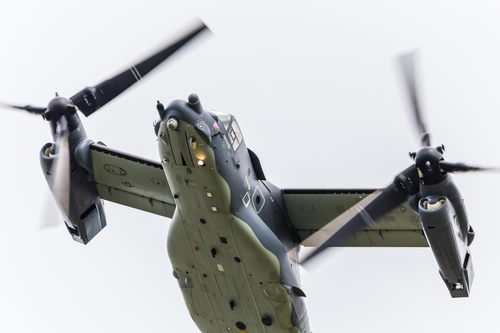
The U.S. Air Force is set to initiate its Integrated Capabilities Command by the end of this year, as announced by Air Force Chief Gen. David Allvin.

This move is part of a broader reorganization strategy aimed at streamlining modernization and maintaining an edge in what is termed as the “great-power competition.”

The command will centralize the Air Force’s future requirements planning, enabling a more unified approach toward developing new systems and capabilities.

The command’s establishment reflects the Air Force’s commitment to adapting to the rapid pace of technology and the evolving strategic environment.

The service has been criticized for a “diffused and fragmented” approach that has led to sourcing deployments and building new capabilities “in chunks at a time.”

According to Allvin, the command will be staffed by 500 to 800 personnel, drawn from the current ranks of the Air Force, who have been developing modernization requirements at major commands.

These individuals will now be re-designated and will start working under the new command by year-end.

The ICC’s operations will not be confined to one central location; instead, personnel will be stationed near major command headquarters to maintain connectivity and tactical alignment with ongoing operations.

The new command aims to integrate functions and platforms in innovative ways. For instance, Allvin highlighted the Rapid Dragon program, which exemplifies this integration by launching long-range missiles from the back of a cargo aircraft, blurring the traditional lines between Air Mobility Command and Air Force Global Strike Command.

The Air Force’s pursuit of the Integrated Capabilities Command is not without its challenges. Gen. Allvin expressed concerns over budget uncertainties and potential cuts that could undermine the timely establishment and effectiveness of the command.

He emphasized that the strategic environment compels the Air Force to make this transition, warning that delays could result in falling further behind potential adversaries.

Additionally, the Air Force is looking beyond the command’s creation to other transformative changes. These include a new focus on technical job positions and the reintroduction of warrant officers in IT and cyber fields to keep pace with high-tech operational demands.

The Air Education Training Command is also being redesigned as the Airman Development Command to produce mission-ready airmen at a faster pace.

Air Force leaders have underscored the urgency of these changes. Gen. David Allvin, in a supporting document, wrote, “We are out of time to reoptimize our forces to meet the strategic challenges in a time of great-power competition.”

This sentiment is shared by Air Force Secretary Frank Kendall and other senior leaders, who see Russia’s aggressions as a call to action.
Relevant articles:
– Expect Air Force’s new requirements command to launch this year, chief says, Defense One
– Allvin Unveils New Details of Integrated Capabilities Command, Air & Space Forces Magazine
– Air Force reorg must happen fast and needs funding, chief says, Defense News
– Air Force announces new 3-star command, creates new jobs and changes training for airmen, Stars and Stripes
